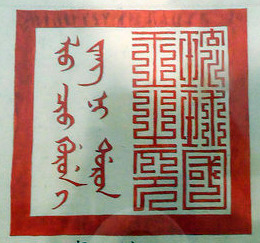Manchus

- Japanese: 満州民族 (manshuu minzoku)
- Chinese: 滿族 (Mǎnzú)
The Manchus are a nomadic steppe people from what is today northern China, or Manchuria. Manchus ruled China under the Qing Dynasty after seizing control from the Han Chinese Ming Dynasty in 1644.
In a classic example of how ethnic identity can change over time, and even be invented, the word Manchu only dates back to around 1635. Culturally if not ethnically related to the Mongols and claiming descent from the Jurchens, the Manchus first coalesced into a unified "Manchu" identity around that time, less than ten years, in fact, before taking over China.
Though a separate ethnic group from the Han Chinese, who introduced numerous significant cultural changes to China, their dynasty was so long-lasting, and the cultural changes so deeply ingrained into Chinese life by the 19th century, that much of what is seen or "known" in the West as stereotypically Chinese in fact derives from Manchu culture, imposed upon the Chinese in the mid-to-late 17th century, and part of Chinese "tradition" no earlier than that. Some examples of this include wearing one's hair long and braided in a queue, the particular type of round hat typically associated with the queue, and the cheongsam or qipao, the stereotypical slim Chinese dress with off-center buttons.
Origins
The Manchus as a group emerged in the early 17th century. Their leader brought various Mongol tribes under his authority and had himself named khan. By 1644, there were roughly one million people claiming Manchu identity.
The Manchu homeland came to be known as "Manchuria" (C: Mǎnzhōu, J: Manshû) around that time, and can be widely seen to possess that name in English-language publications, maps, and globes, from the early 18th century onwards. Yet, whether in response to the puppet state of Manchukuo (C: Mǎnzhōuguó, J: Manshûkoku) controlled by the Japanese from 1932-1945, or whether out of nationalistic desire to claim the region as an integral part of China (even though it wasn't prior to the Qing), Chinese today often insist on calling the region "Northeast China" (C: Zhōngguó Dōngběi).
References
- Robert Tignor, Benjamin Elman, et al, Worlds Together, Worlds Apart, vol B, Fourth Edition, W.W. Norton & Co (2014), 502.